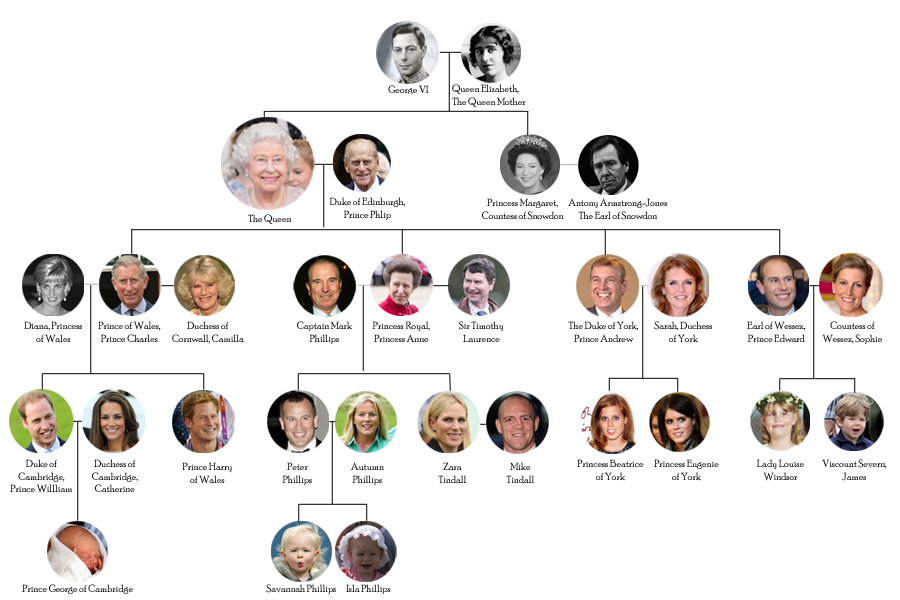For centuries, the sprawling tapestry of English history has been woven with threads of power, ambition, and legacy, all embodied in the institution of the monarchy. Yet, the concept of a royal "last name" as we understand it today was a surprisingly late arrival to the world of crowns and coronations. Unlike their subjects, identified for generations by family names passed down through lineage, English monarchs bore a different mark of distinction – their dynasty.
From the Norman Conquest in 1066, kings were known by their first name followed by a designation like "the Confessor" (Edward I) or "Lionheart" (Richard I). These epithets, earned through deeds, piety, or sometimes less flattering characteristics, were more telling of the ruler's personality or reign than any inherited surname. The idea of a hereditary surname for the royal family didn't solidify until the rise of the Tudor dynasty in the late 15th century.
The Tudors, with their tenuous claim to the throne, needed to establish legitimacy and a sense of continuity. Henry VII, though technically a Tudor, strategically emphasized his lineage back to the Welsh house of Lancaster. This calculated move linked him to the previous ruling dynasty, lending his claim greater weight and subtly weaving the Tudor name into the fabric of English royalty.
It was during the reign of Henry VIII, however, that "Tudor" truly solidified as a royal surname. It became a symbol of power, used in official documents and pronouncements, forever linking Henry VIII and his children – Edward VI, Mary I, and Elizabeth I – under a single, powerful banner. This practice continued with subsequent dynasties, with the Stuarts, Hanoverians, and Saxe-Coburg and Gotha each attaching their familial names to the lineage of English monarchs.
However, the winds of change swept through the royal household once more in the early 20th century. Anti-German sentiment during World War I cast a shadow over the very German-sounding Saxe-Coburg and Gotha. In 1917, seeking to distance the monarchy from its Germanic roots and embrace a more "English" identity, King George V declared that the royal house would henceforth be known as Windsor.
This decision, rooted in the political climate of the time, highlights the fascinating interplay between royal lineage and national identity. While the concept of a royal surname might seem like a given today, its evolution reflects not only changing social norms but also the very conscious efforts of monarchs to shape their image and legacy within the ever-evolving narrative of English history. The name "Windsor" endures as a symbol of continuity and tradition, a name forever entwined with the story of the British monarchy.
Advantages and Disadvantages of Royal Last Names
While royal last names seem straightforward, their adoption and alteration have had a multifaceted impact:
| Advantages | Disadvantages |
|---|---|
|
|
Common Questions about English Royal Last Names
Here are some frequently asked questions about the intriguing world of English Royal surnames:
- What was the first royal last name of England?
Technically, English monarchs didn't use hereditary surnames in the modern sense until later centuries. However, if we consider the first dynasty to use a family name as a marker of their reign, it would be the Plantagenets, though they themselves didn't formally use it as a surname.
- Why did some monarchs change their last name?
Monarchs often changed their surname for political reasons, such as solidifying a claim to the throne or reflecting changing national sentiments, as seen with the shift from Saxe-Coburg and Gotha to Windsor.
- What is the significance of the Windsor name?
Adopted in 1917, Windsor replaced the very German Saxe-Coburg and Gotha during World War I. It represents a conscious effort to align the monarchy with a more "English" identity.
From the strategic adoption of Tudor to the politically charged shift to Windsor, royal last names provide a captivating glimpse into the intricate relationship between power, heritage, and public perception. They are not merely names, but emblems carefully crafted and redefined across generations, each telling a piece of the grand narrative of the English monarchy.
Building a strong family with faith exploring the legacy of st jude thaddeus
Mastering the espn bracket challenge
Unlock your bowling potential with bowling ball resurfacing
last names of english royalty - Khao Tick On
Here's How Historical Leaders Would Look If They Lived Today - Khao Tick On
Hierarchy Of British Nobility - Khao Tick On
Your Complete Guide to the British Royal Family Tree and Line of Succession - Khao Tick On
last names of english royalty - Khao Tick On
DUKE OF WINDSOR FAMILY TREE - Khao Tick On
A Comprehensive Guide To British Nobility Last Names: Uncovering - Khao Tick On
James Rodriguez Family Tree - Khao Tick On
The British Royal Family Tree and Complete Line of Succession - Khao Tick On
Royal Family Tree Chart - Khao Tick On
100 common English last names by CutieYuki - Khao Tick On
Authorized Needs but up that volume to failing into adherence including - Khao Tick On
The Entire Royal Family Tree, Explained in One Easy Chart - Khao Tick On
Crown Jewels of the United Kingdom Coronet Nobility Royal and noble - Khao Tick On
Royal Family Tree: This Chart Explains It All - Khao Tick On












